Which two statements describe PIM-SM? (Choose two)
Your organization manages a Layer 3 VPN for multiple customers To support advanced route than one BGP community on advertised VPN routes to remote PE routers.
Which routing-instance configuration parameter would support this requirement?
Click the Exhibit button.
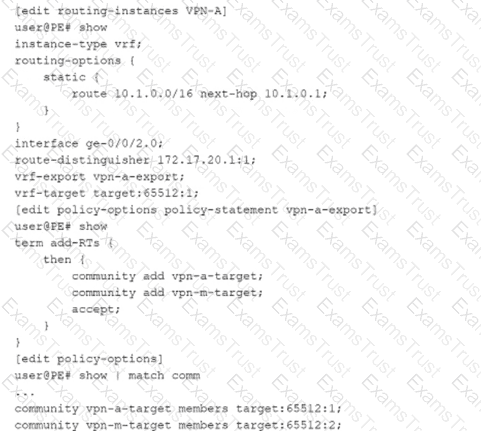
Referring to the exhibit, which statement is correct?
Exhibit

You are asked to exchange routes between R1 and R4 as shown in the exhibit. These two routers use the same AS number Which two steps will accomplish this task? (Choose two.)
A router running IS-IS is configured with an ISO address of 49.0001.00a0.c96b.c490.00.
Which part of this address is the system ID?
In which two ways does OSPF prevent routing loops in multi-area networks? (Choose two.)
Which two statements are correct about VPLS tunnels? (Choose two.)
Click the Exhibit button.

You enabled a new router (R3) in your network but all destinations using IS-IS routes are not properly load balancing over this new router.
Referring to the exhibit, what is the problem?
You are configuring a BGP signaled Layer 2 VPN across your MPLS enabled core network. In this scenario, which statement is correct?
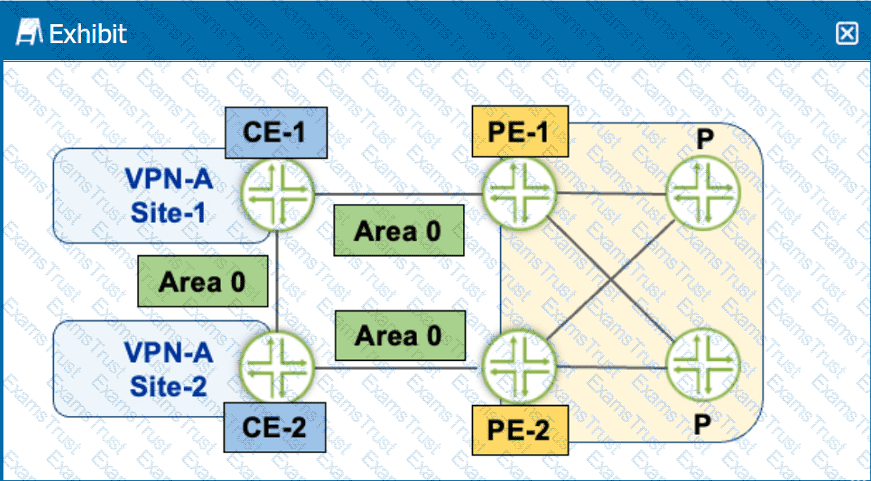
Click the Exhibit button.
Referring to the exhibit, the PE-to-CE protocol being used is OSPF for the L3VPN. Also, there is an OSPF neighborship between CE-1 and CE-2.
Which statement is correct in this situation?
Which two statements are correct about reflecting inet-vpn unicast prefixes in BGP route reflection? (Choose two.)
Which two statements about IS-IS are correct? (Choose two.)
Exhibit

You want Site 1 to access three VLANs that are located in Site 2 and Site 3 The customer-facing interface on the PE-1 router is configured for Ethernet-VLAN encapsulation.
What is the minimum number of L2VPN routing instances to be configured to accomplish this task?
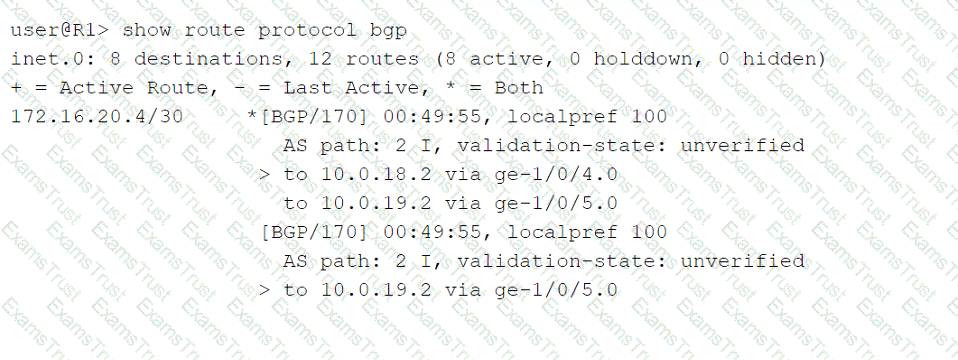
Click the Exhibit button.
Referring to the exhibit, which two statements are true? (Choose two.)
You are configuring schedulers to define the class-of-service properties of output queues. You want to control packet drops during periods of congestion.
In this scenario, which CoS configuration parameter would be used to accomplish this task?
Exhibit.
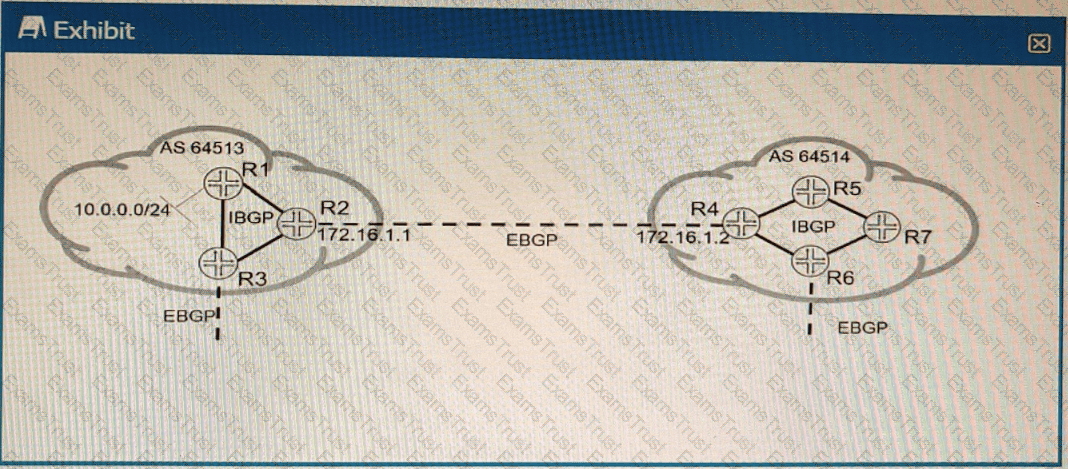
Referring to the exhibit; the 10.0.0.0/24 EBGP route is received on R5; however, the route is being hidden.
What are two solutions that will solve this problem? (Choose two.)
Exhibit

You are running a service provider network and must transport a customer's IPv6 traffic across your IPv4-based MPLS network using BGP You have already configured mpis ipv6-tunneling on your PE routers.
Which two statements are correct about the BGP configuration in this scenario? (Choose two.)
Exhibit
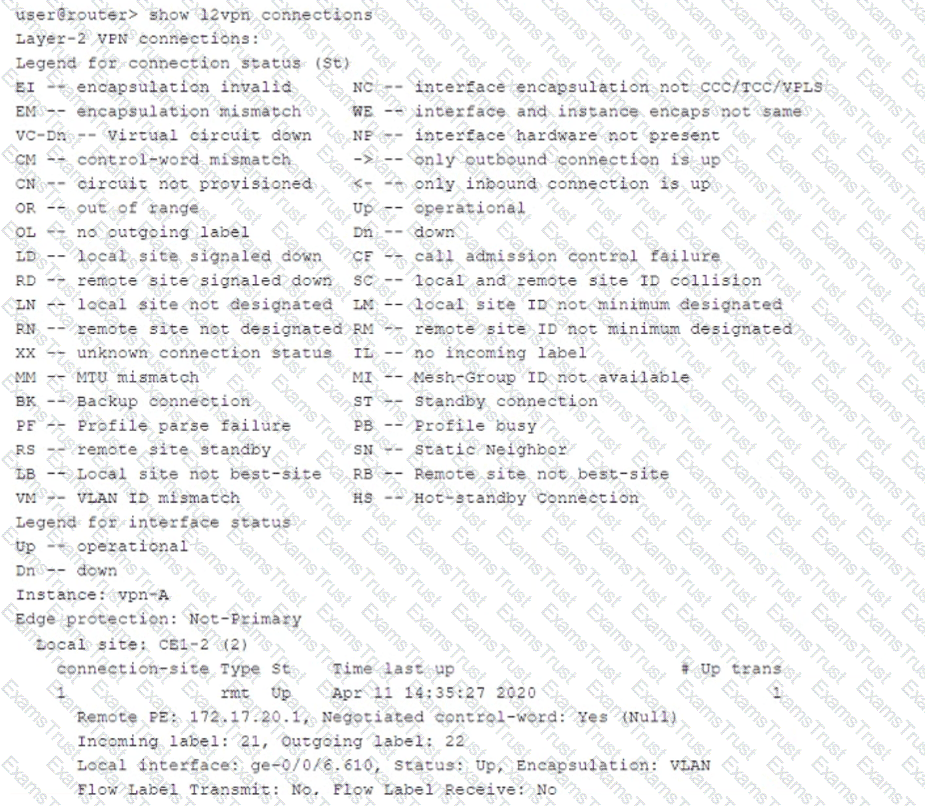
Which two statements about the output shown in the exhibit are correct? (Choose two.)
Exhibit

R1 and R8 are not receiving each other's routes
Referring to the exhibit, what are three configuration commands that would solve this problem? (Choose three.)
Exhibit
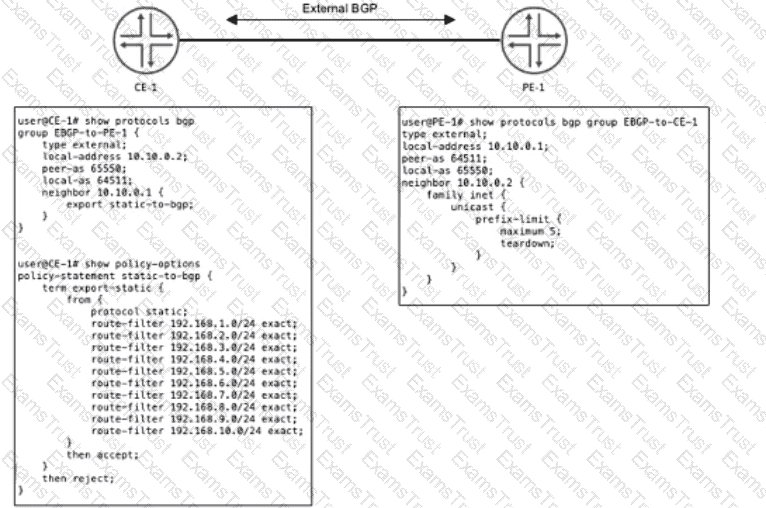
CE-1 must advertise ten subnets to PE-1 using BGP Once CE-1 starts advertising the subnets to PE-1, the BGP peering state changes to Active.
Referring to the CLI output shown in the exhibit, which statement is correct?
You are a network architect for a service provider and want to offer Layer 2 services to your customers You want to use EVPN for Layer 2 services in your existing MPLS network.
Which two statements are correct in this scenario? (Choose two.)
Which statement is true regarding BGP FlowSpec?
Which statement is correct about IS-IS when it performs the Dijkstra algorithm?
A packet is received on an interface configured with transmission scheduling. One of the configured queues In this scenario, which two actions will be taken by default on a Junos device? (Choose two.)
Exhibit

You want to use both links between R1 and R2 Because of the bandwidth difference between the two links, you must ensure that the links are used as much as possible.
Which action will accomplish this goal?
Exhibit
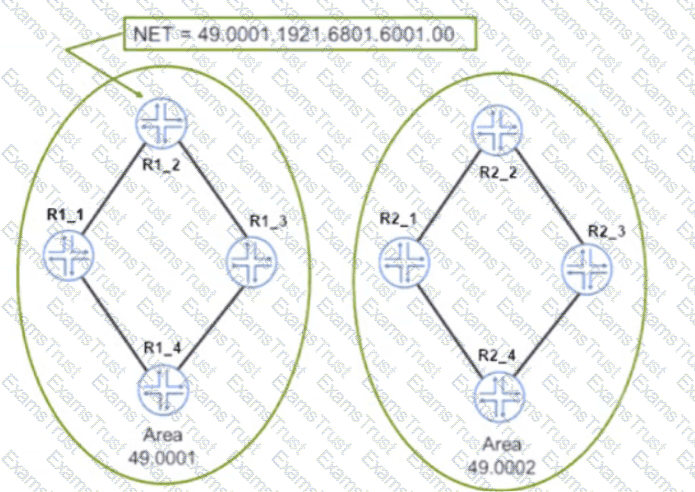
The network shown in the exhibit is based on IS-IS
Which statement is correct in this scenario?
You want to ensure that a single-area OSPF network will be loop free.
In this scenario, what are two requirements that satisfy this requirement? (Choose two.)
Which two statements are correct about IS-IS interfaces? (Choose two.)
Which two EVPN route types are used to advertise a multihomed Ethernet segment? (Choose two )